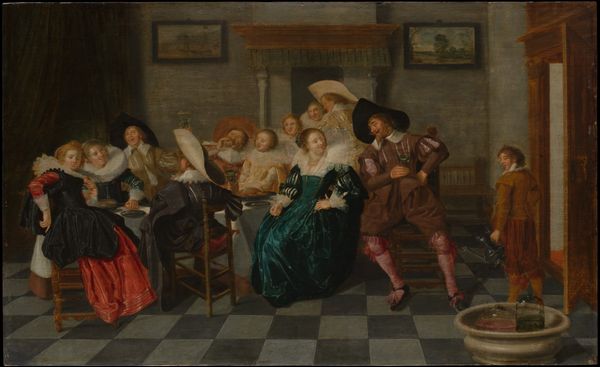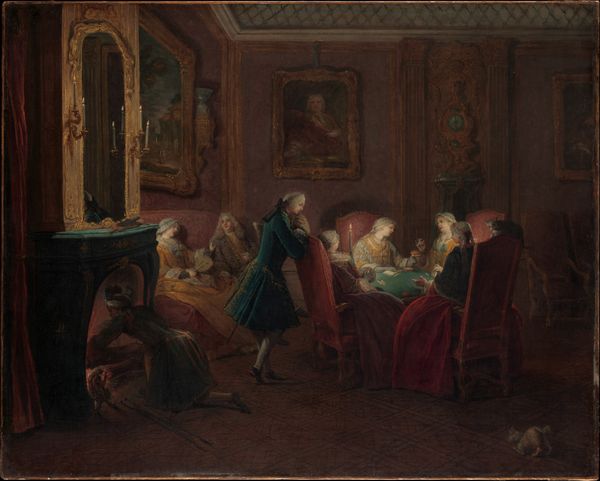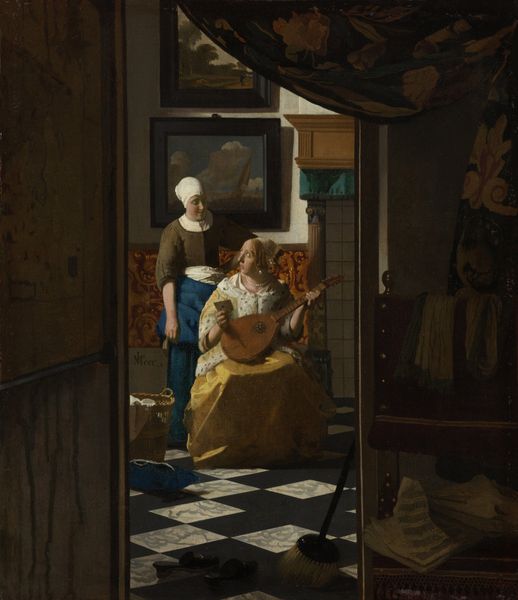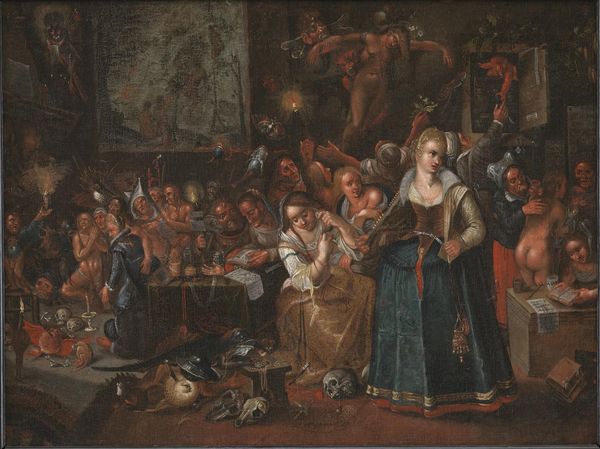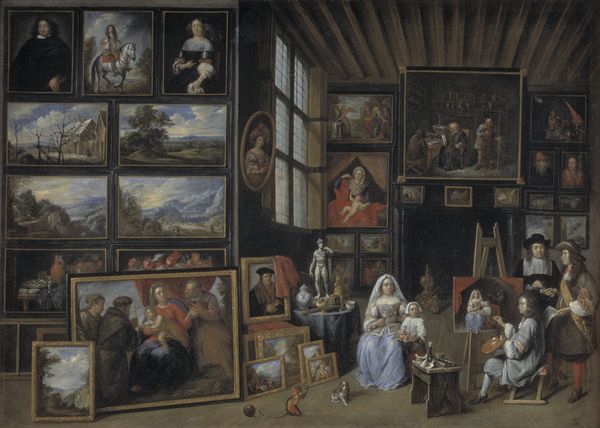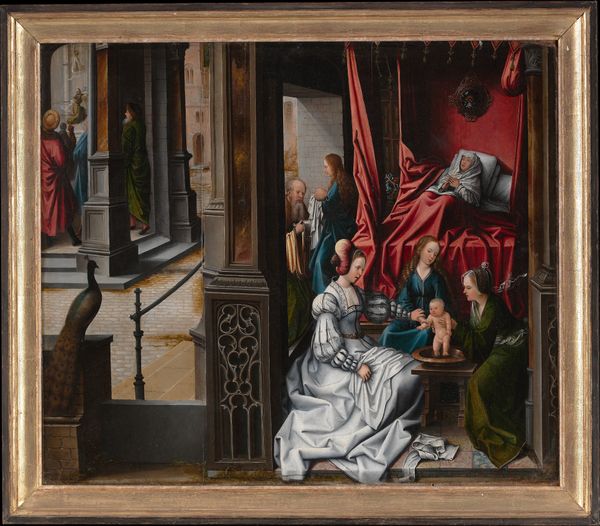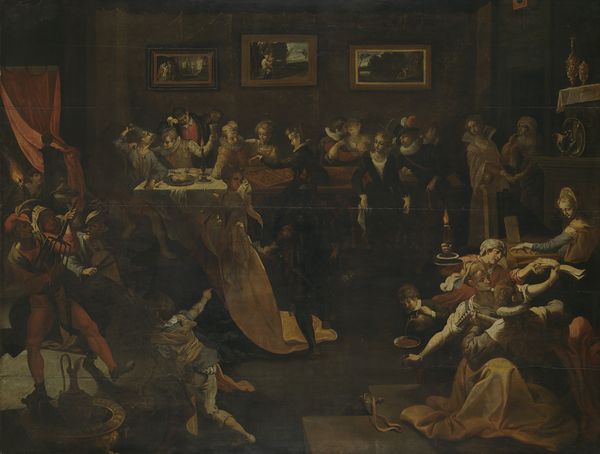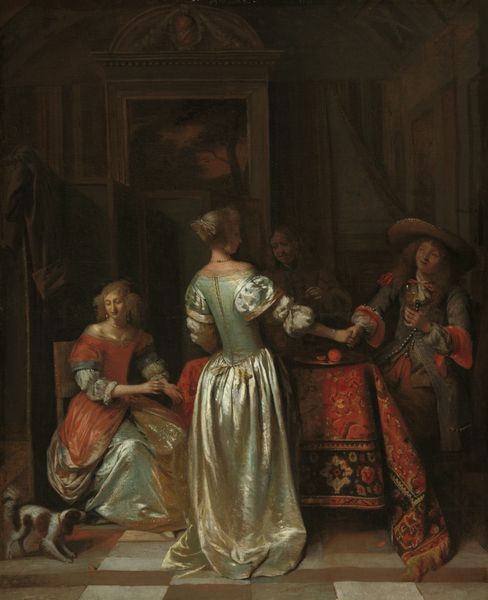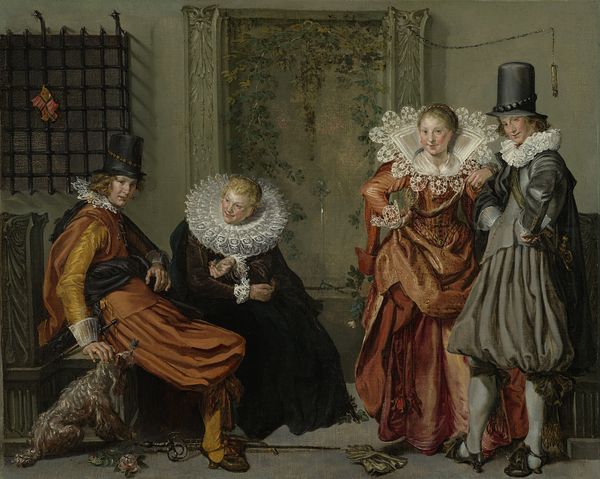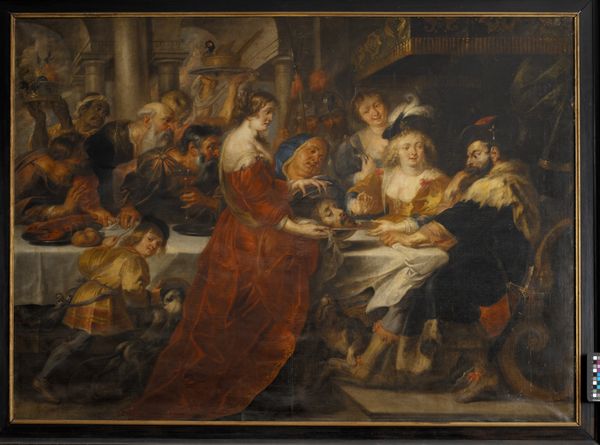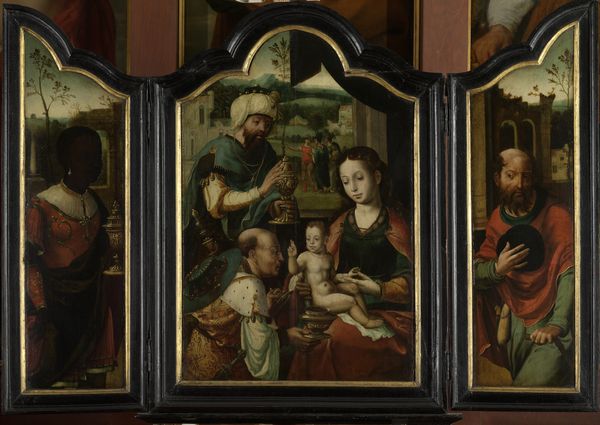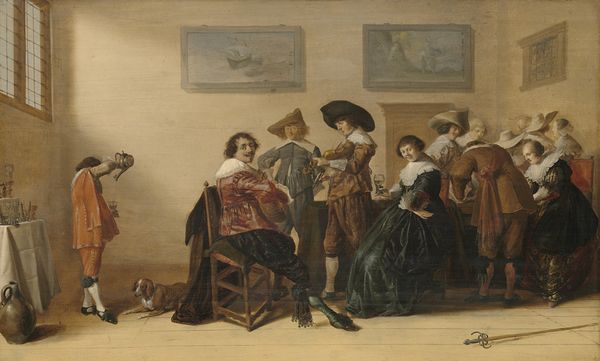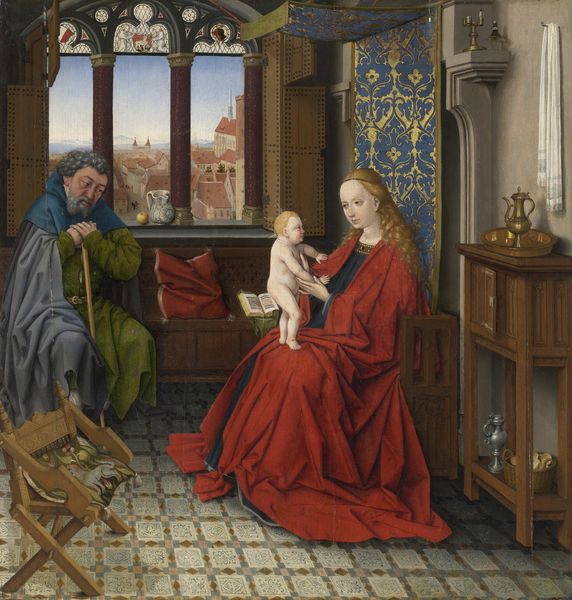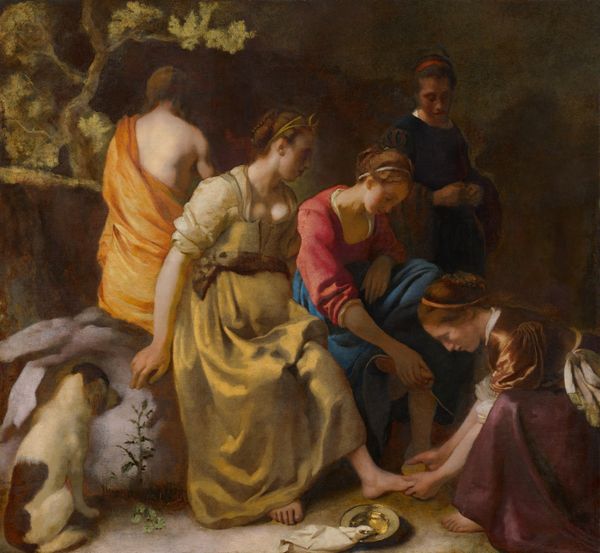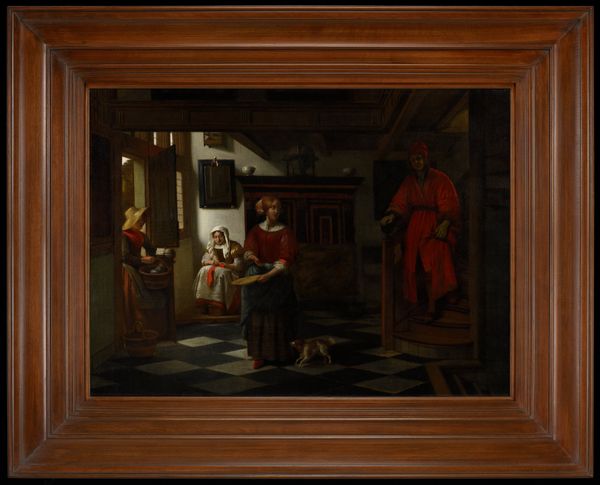
The Parable of the Wise and the Foolish Virgins 1593 - 1623
0:00
0:00
painting, oil-paint, wood
#
narrative-art
#
painting
#
oil-paint
#
mannerism
#
figuration
#
wood
#
genre-painting
#
history-painting
Dimensions: 52 cm (height) x 72 cm (width) (Netto), 63.8 cm (height) x 84.7 cm (width) x 5.3 cm (depth) (Brutto)
Curator: The piece before us, hanging here at the SMK, is "The Parable of the Wise and Foolish Virgins," an oil on wood created between 1593 and 1623, attributed to Hieronymus Francken II. What strikes you initially about this densely populated interior? Editor: An immediate impression: theatrical. The stage is crowded, and the palette, dominated by deep reds and blues, gives a certain heavy density to the composition. Curator: That's a keen observation. Think about this parable in its time: these are wealthy women, the privileged class. Francken is, in a way, holding a mirror up to their status, critiquing their pursuits and societal roles. The "foolish virgins" would represent the vice of the wealthy, of course. It brings into sharp focus themes of female virtue and class critique that reverberated in a very religiously dominated Europe at the time. Editor: Right, there is a marked contrast created between that group on the left engaged in religious acts with a group seemingly concerned with worldly pleasures. This opposition of course also occurs in paintings on the walls, particularly the explicit love scene with a male nude on the upper right. Semiotically, it sets up a stark binary. The composition's complexity—all those overlapping forms—speaks volumes about visual tension. Curator: Precisely, those painted works reinforce Francken's thematic purpose in depicting those binaries, and, indeed, they heighten the understanding of how elite society may consume art in and of itself. It seems they preferred to hang up salacious nudes, more often than pious scenes. So is Francken indicting these women and men for engaging in that vice as part of the world in which they occupy? How are gender, wealth, and piety all intersecting in this narrative? Editor: Intriguing to contemplate, even the textural variations add another layer, from the reflective sheen on the ewers to the deep opacity of the draperies, adding to the painting’s sophisticated and multifaceted dialogue of virtue, vice, and worldliness. Curator: So, as we reflect on Hieronymus Francken II’s parable, it prompts us to ask: how do the choices of a society reflect its values? How can artistic style reflect society's flaws? Editor: Indeed. "The Parable of the Wise and Foolish Virgins" not only visually captivates, but stimulates the ongoing, ever-relevant inquiry into art, morality, and the mirrors societies hold up to themselves.
Comments
No comments
Be the first to comment and join the conversation on the ultimate creative platform.
